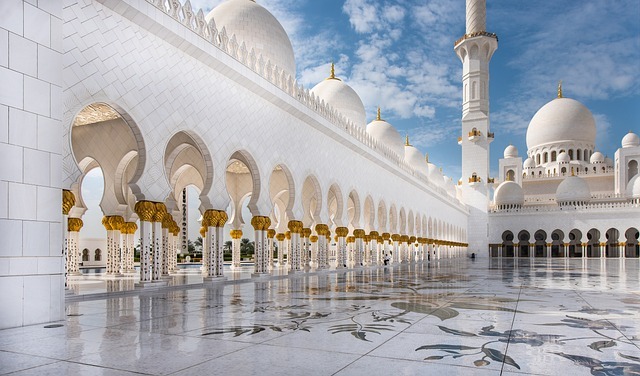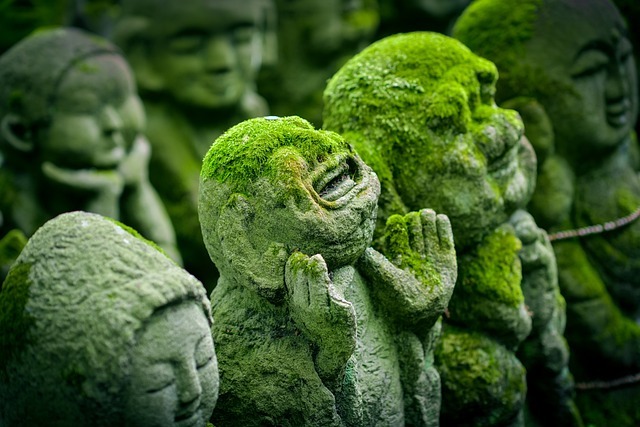Step into a world of wonder and awe as we explore the majestic temples of Angkor, a timeless wonder nestled in the heart of Cambodia. This archaeological site, spanning over 400 square kilometers, is a testament to the ingenuity and artistic brilliance of the ancient Khmer civilization. From the towering spires to the intricate carvings, each temple whispers stories of a glorious past.
One cannot help but be captivated by the grandeur of Angkor Wat, the crown jewel of the complex. Standing proudly as the largest religious monument in the world, this temple is an architectural masterpiece. Its symmetrical design and harmonious proportions are a reflection of the Khmer’s deep reverence for cosmology and spirituality. As the sun rises, casting its golden hues upon the temple’s facade, visitors are transported to another era, evoking a sense of tranquility and spiritual awakening.
Venturing deeper into the vast expanse of Angkor, one encounters the enigmatic Bayon Temple. Known for its iconic stone faces, this temple exudes a mystical charm. The carved visages, seemingly gazing into the distance, embody both wisdom and serenity. Exploring the labyrinthine corridors and ascending the steep staircases, visitors can’t help but feel a connection to the past, imagining the bustling city that once thrived around this sacred site.
As we traverse through this ancient wonderland, Ta Prohm emerges like a forgotten treasure, reclaimed by nature itself. Giant roots of towering silk-cotton trees intertwine with crumbling walls, creating a mesmerizing fusion of man-made architecture and nature’s unyielding force. Immortalized in movies, this temple has an undeniable allure, transporting visitors to a realm where time stands still.
Beyond these iconic temples lie countless hidden gems waiting to be discovered. Banteay Srei, adorned with ornate pink sandstone carvings, showcases the Khmer’s remarkable craftsmanship on a smaller, yet equally breathtaking scale. Exploring the lesser-known Preah Khan reveals a haunting beauty, with moss-covered stones and encroaching vegetation adding to its allure.
Unveiling the Secrets: Archaeologists Discover New Hidden Chambers in Angkor Wat
Have you ever wondered what lies beneath the majestic temples of Angkor Wat? Well, prepare to be astonished as archaeologists have recently made a groundbreaking discovery – hidden chambers that have remained concealed for centuries. This remarkable find is shedding new light on the secrets and mysteries surrounding one of the world’s most renowned ancient sites.
Angkor Wat, located in Cambodia, is a UNESCO World Heritage site and a symbol of Khmer architecture and culture. Its intricate carvings and towering structures have captivated visitors for generations. However, it seems there is much more to this architectural marvel than meets the eye.
Using advanced technology and meticulous excavation techniques, a team of archaeologists has unearthed a series of hidden chambers within Angkor Wat. These chambers, tucked away beneath the temple complex, offer a glimpse into the past and provide valuable insights into the lives of the people who once inhabited this sacred place.
What makes this discovery even more exciting is the presence of intricate murals adorning the chamber walls. These stunning artworks depict scenes from everyday life during the height of the Khmer Empire. From vibrant market scenes to religious ceremonies, these murals offer a vivid snapshot of a bygone era.
Furthermore, artifacts discovered within the chambers are providing archaeologists with important clues about the religious and cultural practices of the time. Intricately carved statues, gold jewelry, and ancient pottery are just some of the treasures being unearthed, each offering a tantalizing piece of the puzzle.
The revelation of these hidden chambers is a testament to the relentless determination of archaeologists to unravel the mysteries of the past. It reminds us that even our most revered historical sites still hold secrets waiting to be uncovered. As further exploration and analysis continue, we can expect even more astonishing revelations that will reshape our understanding of Angkor Wat and its significance in history.
So, the next time you visit this awe-inspiring temple complex, take a moment to contemplate the hidden wonders that lie beneath your feet. Each step you take on the ancient stones is a connection to a rich and vibrant past, waiting to be explored. Angkor Wat continues to inspire and amaze, and with each new discovery, it becomes even more enigmatic and captivating.
Preserving the Past: UNESCO’s Efforts to Safeguard Angkor’s Ancient Temples
Have you ever wondered how ancient wonders are protected for future generations? Well, UNESCO, the United Nations Educational, Scientific and Cultural Organization, plays a crucial role in safeguarding these treasures. One such remarkable endeavor is their efforts to preserve the ancient temples of Angkor.

But what does it take to protect these magnificent structures? It involves a comprehensive approach that encompasses conservation, research, and sustainable development. One key aspect of this effort is the restoration and maintenance of the temples. Skilled artisans and experts work tirelessly to repair damages caused by natural elements and human activities, using traditional techniques to retain their authenticity.
Another vital aspect is raising awareness and fostering local community involvement. UNESCO collaborates closely with the Cambodian government and local communities to educate people about the importance of preserving their heritage. By instilling a sense of pride and ownership, they encourage the locals to become guardians of their own cultural legacy.
Furthermore, sustainable tourism plays a crucial role in the preservation efforts. Tourists flock to Angkor to witness its grandeur, and their presence can both benefit and harm the site. UNESCO works with the government and tourism operators to establish guidelines for responsible tourism, ensuring that visitors can appreciate the temples while minimizing their impact on the fragile structures.
In addition to physical preservation, UNESCO also focuses on research and documentation. Through archaeological studies and scientific analysis, they gather valuable information about the temples’ history, materials used, and construction techniques. This knowledge aids in developing effective preservation strategies.
UNESCO’s dedicated efforts to safeguard Angkor’s ancient temples are truly commendable. By employing a holistic approach that combines restoration, community engagement, sustainable tourism, and research, they ensure the preservation of this magnificent heritage for generations to come. As visitors, it is our responsibility to appreciate these wonders while respecting the rules and guidelines set forth by UNESCO and the local authorities. Together, we can preserve the past and cherish this invaluable gift from our ancestors.
Angkor’s Rising Sun: Exploring the Spiritual Significance of Cambodia’s Temple Complex
As the sun gently rises over the ancient temple complex of Angkor, Cambodia, a mystical aura envelops the surrounding landscape. The magnificent structures, shrouded in history and spirituality, stand as testament to the rich cultural heritage of this enchanting land. In this article, we delve into the spiritual significance behind Angkor, unearthing its secrets and unveiling its profound impact on those who visit.
Angkor, a UNESCO World Heritage site, is renowned for its awe-inspiring temples that reflect the artistic brilliance and religious devotion of the Khmer civilization. At the heart of this complex lies Angkor Wat, the largest religious monument in the world. Its architectural grandeur and intricate carvings depict Hindu mythology, symbolizing the divine connection between gods and mortals.
Delving deeper into the esoteric meaning of Angkor, we discover that it was not merely a place of worship but also a cosmic representation of the universe itself. The layout of the temples mirrors the celestial alignment of stars, planets, and constellations, imbuing the sacred site with a celestial energy that resonates with visitors.

Stepping beyond the boundaries of religion, Angkor’s spiritual allure transcends cultural and geographical barriers. It speaks to the universal longing for transcendence and the quest for inner peace. Exploring the temple complex, visitors often find themselves lost in contemplation, pondering life’s existential questions and seeking solace amidst the grandeur of these ancient ruins.
In essence, Angkor’s rising sun serves as a metaphor for the human spirit, eternally yearning for enlightenment. Just as the sun emerges from the darkness to illuminate the world, so too does Angkor illuminate our souls, offering a glimpse into the mysteries of existence.
Angkor’s spiritual significance stretches far beyond its architectural magnificence. It serves as a bridge between the earthly and the divine, inviting visitors to embark on a profound journey of self-discovery. As the rising sun bathes the temples in its warm glow, it ignites a spark within us, reminding us of our innate connection to something greater than ourselves. Angkor, with its ancient wisdom and timeless beauty, continues to captivate the hearts and minds of all who venture to this sacred site.
From Jungle to Icon: The Remarkable Restoration Journey of Ta Prohm Temple
Introduction:
Can you imagine a temple swallowed by nature, its ancient stone walls entwined with massive tree roots? Step into the captivating world of Ta Prohm Temple, where the relentless force of nature and the artistry of human endeavor converge. This article delves into the awe-inspiring restoration journey that transformed this hidden gem in the heart of Cambodia’s Angkor Archaeological Park into an iconic testament to history.
The Embrace of Nature:
Ta Prohm Temple, built in the 12th century, was left abandoned for centuries, succumbing to the encroaching jungle’s relentless advance. Delicate dance between the crumbling ruins and towering trees, nature claimed its territory, creating a uniquely mystical atmosphere. This incredible fusion of stone and foliage sparked worldwide fascination, attracting adventurers and archaeologists alike.
Preservation and Collaboration:
Recognizing the delicate balance between preservation and restoration, a joint effort between the Cambodian government and international organizations began in 1993. The mission was clear: to save the temple from further deterioration while preserving its enchanting ambience. Experts delicately intervened to stabilize the structures, ensuring their longevity without compromising the temple’s extraordinary symbiosis with nature.
Restoring the Glory:
To restore Ta Prohm, skilled artisans embarked on a meticulous process. They meticulously documented and dismantled fallen structures before cleaning and preserving each component. Carefully, they reassembled the temple, reinforcing weakened areas while retaining the authentic weathered appearance that had captivated visitors for years. The restoration aimed not to erase nature’s touch but to ensure its harmonious coexistence with the ancient architecture.
Preserving the Mystique:
The restoration team took great care to maintain the temple’s original allure. Intricate carvings and mesmerizing bas-reliefs were safeguarded, telling stories of ancient Khmer civilization. The sprawling tree roots that had become part of the temple’s identity were carefully secured, their intertwining form preserved for generations to come. The result is a captivating blend of natural wonder and architectural grandeur.
A Symbol of Timeless Beauty:
Today, Ta Prohm Temple stands as an iconic testament to the passage of time and the indomitable power of nature. It continues to inspire awe in visitors from around the globe as they walk in the footsteps of ancient civilizations. The temple’s journey from forgotten ruins to a cherished cultural treasure showcases the triumph of human ingenuity and the importance of preservation.
Conclusion:
Ta Prohm Temple’s restoration journey symbolizes the delicate balance between preservation and coexistence with nature. By breathing new life into this enchanting site, experts have ensured its survival for generations to come. As visitors explore the captivating fusion of stone and vegetation, they are reminded of the resilience of the past and the exquisite beauty that emerges when nature and human artistry intertwine.